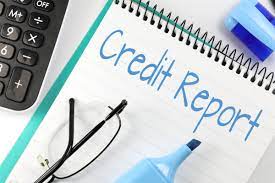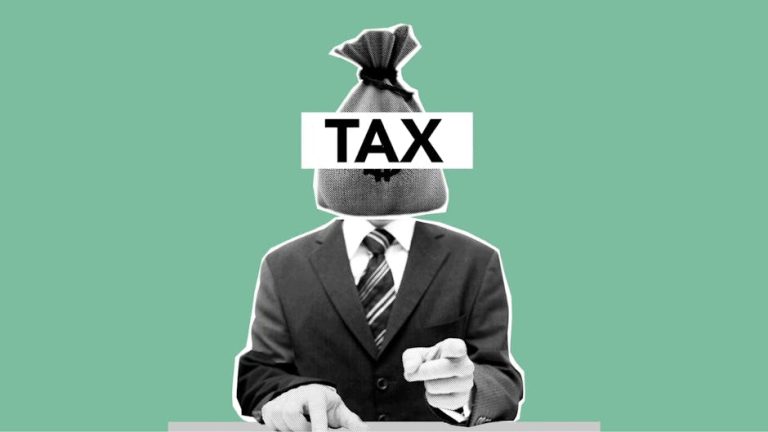Your credit report is crucial for financial management and credit score improvement. This guide provides a step-by-step approach to decoding your credit report, empowering you to make informed decisions about your finances.
Get Professional Help
Explore the benefits of credit repair services to enhance your credit journey.
Unveiling the Credit Report
A credit report is a comprehensive document detailing your credit history and financial behavior, essential for evaluating creditworthiness.
Importance of Checking Your Credit Report
Regularly monitoring your credit report helps track changes, identify errors affecting your credit score, and facilitates early dispute resolutions.
Methods for Obtaining a Free Credit Report
Leverage your right to a free credit report annually from Equifax, Experian, and TransUnion through AnnualCreditReport.com or 1-877-322-8228.
Navigating the Credit Report Layout
Personal Information
Review the accuracy of personal details, including name, address, social security number, and date of birth.
Account Information
Understand details about credit accounts, payment history, outstanding debts, and credit limits to gauge your financial health.
Credit Inquiries
Differentiate between hard and soft credit inquiries, understanding their impact on your credit report.
Public Records
Identify potential credit score impactors like bankruptcies, foreclosures, and tax liens in the public records section.
Deciphering Your Credit Score
Calculation
Learn how your three-digit credit score, ranging from 300 to 850, is calculated based on your credit report information.
Payment History
Explore the significance of your payment history and its direct impact on your credit score.
Credit Utilization
Understand the importance of credit utilization in signaling your financial health to lenders.
Credit Age
Consider the role of your credit history’s length in influencing your credit score.
Types of Credit
Diversify your credit profile with a mix of credit types to positively impact your credit score.
Derogatory Marks
Identify and address derogatory marks, such as late payments or bankruptcies, negatively affecting your credit score.
Taking Control: Disputing Errors
Dispute Process
Exercise your right to dispute errors by providing supporting documentation to the credit bureau.
A credit report is a comprehensive summary of your financial history and creditworthiness. It contains detailed information about your credit accounts, payment history, and any negative events such as late payments or bankruptcy filings. Understanding how to read and interpret your credit report is essential for maintaining good credit and financial health. In this article, we will guide you through the process of reading a credit report, highlighting the key sections and information to look for. Whether you’re applying for a loan, renting an apartment, or just want to stay on top of your financial standing, learning how to read a credit report is a valuable skill.
Why it’s important to read and understand your credit report
Reading and understanding your credit report is crucial for several reasons. Firstly, it allows you to monitor and maintain your creditworthiness. By reviewing your credit report regularly, you can identify any errors or discrepancies that may be negatively affecting your credit score. These errors could be due to inaccurate personal information, unauthorized accounts, or incorrect payment history.
Secondly, understanding your credit report empowers you to take control of your financial health. By knowing what factors are influencing your credit score, you can make informed decisions about your spending, saving, and borrowing habits. You can also take steps to improve your creditworthiness, such as paying your bills on time and reducing your debt.
Additionally, having a good understanding of your credit report is crucial when applying for loans or credit cards. Lenders and creditors rely heavily on this information to determine your creditworthiness and ability to repay debt. By reviewing your credit report beforehand, you can address any potential red flags and present yourself as a responsible borrower.
Reading and understanding your credit report is essential for maintaining good credit, making informed financial decisions, and improving your overall financial health.
How to obtain your credit report
Now that you understand the importance of reading your credit report, let’s discuss how you can obtain a copy of it. Fortunately, there are a few ways you can access your credit report for free.
The first option is to request a copy from each of the three major credit bureaus – Experian, Equifax, and TransUnion. These bureaus are required to provide you with a free copy of your credit report once every 12 months. To request your reports, you can visit AnnualCreditReport.com, the official website mandated by the Fair Credit Reporting Act (FCRA).
Alternatively, you can also request a free credit report by mail. Simply download and print the request form from the AnnualCreditReport.com website, fill it out, and mail it to the address provided. Make sure to include copies of your identification documents, as the bureaus will need to verify your identity.
Lastly, some credit monitoring services offer free access to credit reports as part of their membership benefits. These services often provide additional features such as credit score tracking and alerts for any changes to your credit report.
Stay tuned for more valuable insights on how to navigate through your credit report!
Different sections of a credit report
We will delve into the key sections of a credit report and guide you on how to interpret them effectively. Understanding the different sections of your credit report is essential for gaining a comprehensive view of your financial standing.
The first section of your credit report typically includes personal information such as your name, address, social security number, and date of birth. It’s crucial to review this section carefully for accuracy. Any errors or discrepancies could potentially affect your creditworthiness.
The next section contains details about your credit accounts. This includes information on your credit cards, loans, and mortgages. Pay close attention to your payment history, credit limits, and outstanding balances. These factors play a significant role in determining your credit score.
The public records section outlines any bankruptcies, tax liens, or judgments against you. It’s crucial to address any negative items in this section promptly.
Lastly, the inquiries section lists all the companies that have requested a copy of your credit report. Beware of excessive credit inquiries as they may negatively impact your credit score.
Understanding these sections of your credit report will empower you to identify any inaccuracies, assess your financial health, and take necessary steps to improve your credit standing.
Stay tuned for more valuable insights on how to navigate through your credit report!
Interpreting the information on your credit report
Interpreting the information on your credit report is crucial for understanding your financial standing and making informed decisions. Let’s dive into the key factors to consider when reviewing your report.
Personal Information:
Double-check that all your personal information, such as your name, address, social security number, and date of birth, is accurate. Incorrect information could potentially lead to identity theft or affect your creditworthiness.
Credit Accounts:
Pay close attention to the details of your credit accounts. Review your payment history, credit limits, and outstanding balances. Ensure that all reported information aligns accurately with your records. This section heavily influences your credit score, so any discrepancies should be addressed promptly.
Public Records:
Look out for any bankruptcies, tax liens, or judgments against you in the public records section. Negative items in this section can significantly impact your creditworthiness. Take necessary steps to resolve or dispute any inaccuracies.
Inquiries:
Excessive credit inquiries can hurt your credit score. Limit the number of times you allow companies to request your credit report. Be cautious about unauthorized inquiries, as they could indicate potential fraud.
By thoroughly understanding and analyzing these sections, you can identify any errors, assess your financial health, and take proactive measures to improve your credit standing. Stay tuned for our next section, where we will discuss the steps you can take to dispute inaccuracies on your credit report.
Identifying and addressing errors on your credit report
Now that you have thoroughly reviewed your credit report and have a clear understanding of its various sections, it’s time to address any errors you may have found. It’s common for credit reports to contain inaccuracies, which can have a negative impact on your creditworthiness. Therefore, it’s important to take proactive steps to dispute these errors.
The first step is to gather supporting documentation for the incorrect information. This may include bank statements, payment receipts, or any other relevant documents that can prove the inaccuracies. Once you have gathered all necessary evidence, you can begin the dispute process.
Contact the credit reporting agency in writing and provide them with a detailed explanation of the errors. Include copies of your supporting documentation and clearly state what changes you want to be made. Ensure that you keep copies of all correspondence and documents for your records.
It’s also recommended to reach out to the creditor or lender reporting the incorrect information. Provide them with the same evidence and explanation, and request that they update or remove the inaccurate data. Keep a record of these communications as well.
The credit reporting agency has 30 days to investigate your dispute and respond to your request. During this time, they will contact the creditor or lender to verify the accuracy of the reported information. If the information is found to be incorrect, the credit reporting agency is obligated to update or remove it from your report.
Best practices for improving your credit score
While disputing errors on your credit report is an essential step, it’s also important to take proactive measures to improve your credit score. A higher credit score not only increases your chances of getting approved for loans and credit cards but also helps you secure better interest rates and terms. Here are some best practices to boost your credit score:
Pay your bills on time:
Late payments have a significant impact on your credit score. Set up reminders or automatic payments to ensure you never miss a payment.
Reduce your credit utilization:
Aim to keep your credit card balances below 30% of your available credit limit. High utilization can negatively affect your credit score.
Avoid closing old accounts:
Length of credit history is a crucial factor in determining your credit score. Keep your oldest accounts open to maintain a longer credit history.
Diversify your credit mix:
Having a mix of different types of credit, such as credit cards, loans, and mortgages, can positively impact your credit score.
Limit new credit applications:
Applying for multiple new credit accounts within a short period can be seen as a red flag by lenders and may lower your credit score.
Conclusion
Empower yourself financially by unraveling the complexities of your credit report. With this knowledge, you can confidently manage your credit, make informed decisions, and enhance your credit score.
FAQs
- How frequently should I review my credit report?
- It’s advisable to check your credit report at least once a year or more frequently if actively working to improve your credit.
- Online credit report dispute capability?
- Yes, you can dispute errors online through the respective credit bureau’s website.
- How long do derogatory marks stay on my credit report?
- Derogatory marks can stay for up to seven years, depending on the type of entry.
- Can checking my own credit report negatively impact my credit score?
- No, self-checks are considered soft inquiries and do not affect your credit score.
- What should I do if I find fraudulent activity on my credit report?
- Report fraudulent activity immediately by contacting the credit bureau and the involved creditor.

Table of Contents
Get Your Credit Repaired With credit-repair.com
Google Review:
or
WHY CHOOSE US
We also would counsel you on real, legal, and ethical credit repair for clients rebuilding their life and credit ratings after hardship. Achieving financial freedom is the ultimate dream allowing you to live the life you want to enjoy. Get the help of a professional credit repair company by contacting us.
Our credit restoration services are tailored to your unique situation, and we never make you pay for anything you don’t need. When you sign up for either our Essentials or Essentials Plus packages, you can rest assured that you’ll be receiving the bare minimum of care necessary for your specific situation. You can opt for additional customization options to further tailor our offerings to your specifications. In this manner, you won’t overpay for perks you don’t use. This is the essence of adaptability.







